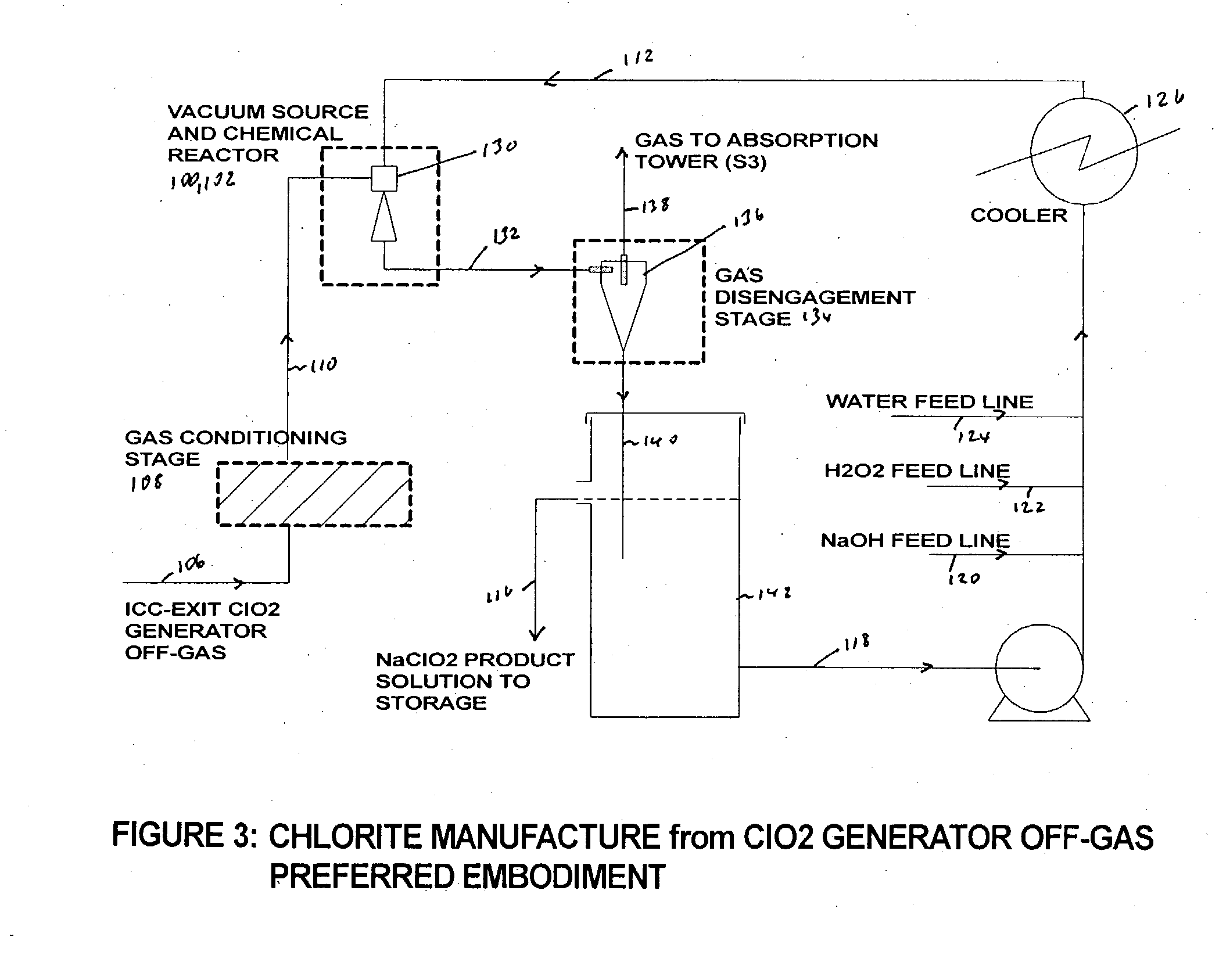Chlorine dioxide from a methanol-based generating system as a chemical feed in alkali metal chlorite manufacture
- Summary
- Abstract
- Description
- Claims
- Application Information
AI Technical Summary
Benefits of technology
Problems solved by technology
Method used
Image
Examples
example
[0059] This Example illustrates the preparation of sodium chlorite with low carbonate and organic content according to the process of the invention.
[0060] A commercial, subatmospheric, methanol-based ClO.sub.2 generator (R8) as shown in FIG. 1 was run in the vicinity of its nominal capacity (20 MTPD) and within its typical liquor composition and pressure / temperature operating ranges: 7.5 to 8.5 N acidity, 1.8 to 2.2 M sodium chlorate concentration, 119 to 121 mmHg absolute pressure and 69 to 71.degree. C.
[0061] Methanol consumption was 0.174 g / g ClO.sub.2, ICC exit temperature was 10.degree. C. and ClO.sub.2 product solution strength was 12.5 g / L.
[0062] Following several hours of steady operation, an off-gas sample started to be continuously withdrawn from a port at the top of the ICC exit line (See point A in FIG. 1). The gases were directed into a 150 mL gas washing bottle (pretreatment stage) followed by a chlorite reaction bottle filled with 100 mL water+37 mL 50% NaOH+17 mL 50%...
PUM
 Login to View More
Login to View More Abstract
Description
Claims
Application Information
 Login to View More
Login to View More - R&D
- Intellectual Property
- Life Sciences
- Materials
- Tech Scout
- Unparalleled Data Quality
- Higher Quality Content
- 60% Fewer Hallucinations
Browse by: Latest US Patents, China's latest patents, Technical Efficacy Thesaurus, Application Domain, Technology Topic, Popular Technical Reports.
© 2025 PatSnap. All rights reserved.Legal|Privacy policy|Modern Slavery Act Transparency Statement|Sitemap|About US| Contact US: help@patsnap.com



